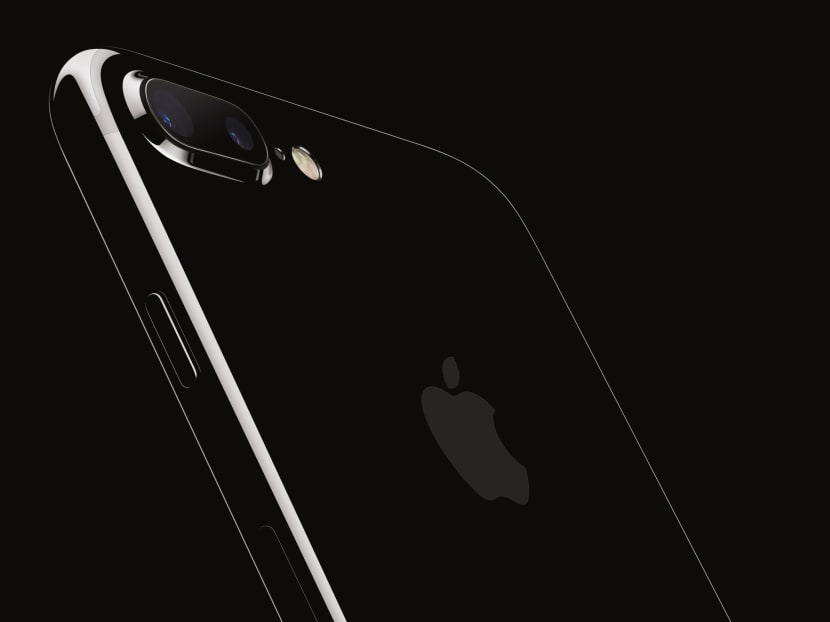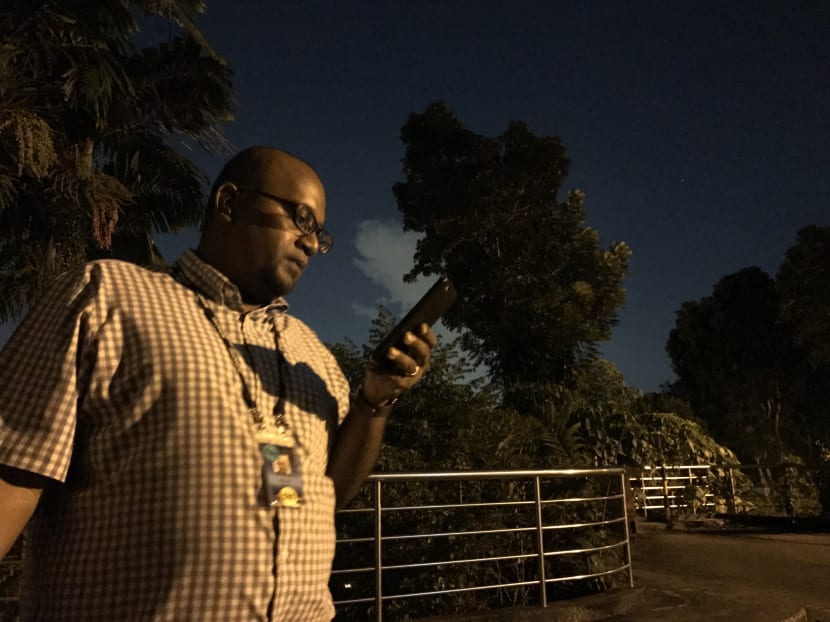iPhone 7 and 7 Plus review: Familiar look, different feel
SINGAPORE — Beyond the much talked about missing headphone jack, one would be hard-pressed to differentiate between the iPhone 7 and 7 Plus and their direct predecessors. Still, Apple has made some significant leaps under the hood.

The iPhone 7 has a new colour - Jet Black. It's glossy and looks great, but fingerprint smudges are also more evident than before. Photo: Apple
SINGAPORE — Beyond the much talked about missing headphone jack, one would be hard-pressed to differentiate between the iPhone 7 and 7 Plus and their direct predecessors.
They weigh almost the same as the 6 and 6S (the new phones are just up to 5g lighter), the design is practically unchanged, and even the screen’s display size and pixel resolution are no different from the older models.
Still, Apple has made some significant leaps under the hood.
The iPhone 7 and 7 Plus are more reliant on Force Touch and Taptic Engine technology — first introduced in the MacBook last year, and which have since made their way into the Apple Watch and the iPhone 6s. The iPhone 7’s Home Button is no longer a physical button but a force-sensitive virtual button. It senses pressure and sends off vibrations to simulate the sensation of a click — Apple calls this Haptic Feedback.
Haptic Feedback is now extended to all apps. I managed to preview a yet-to-be-released game, where the phone vibrates – much like a Playstation or Xbox controller – when you’re firing off a missile or a machine gun. Coupled with the phone’s new stereo speakers, the gaming experience is even more immersive.
Several on-screen buttons have completely disappeared with the introduction of iOS 10. This is most noticeable in the Music app where creating playlists or selecting the next song can only be activated through Force Touch. If you’ve not used the 6S, Apple Watch or the 2015 MacBook before, this may seem a bit alien at first, but it is easy to get used to.
Another major change is the new A10 Fusion chip in the iPhones. Benchmark tests place its processing performance and graphics performance up to two times and three times faster, respectively, than the iPhone 6.
It is also incredibly efficient, being able to distinguish between high-performance and less intensive tasks. For tasks like editing a video or playing graphic-intensive games, the chip’s “high-performance cores” kick in; But if you’re just updating your Facebook status or reading emails, the “high-efficiency cores” will run, and thus saving power. Apple says the battery can last up to 40 hours just listening to music on the 7 and up to 60 hours on the 7 Plus.
Still, the biggest draw of the new iPhones has to be the cameras, although Apple was playing catch-up to some of its rivals in this area.
The rear-camera is upgraded to a 12-megapixel ƒ/1.8 aperture lens, which lets in 50 per cent more light. With the camera’s optical image stabilisation (on both the 7 and 7 Plus) and Apple’s image signal processor – said to be able to process 100 billion operations in 25 miliseconds – low-light photography is even better than before.
(TODAY's very hardworking intern Illiyin Anuwar agreed to be our model for this low-light test. Here's a comparison of photos (from top) of the iPhone 7, iPhone 6S and the iPhone 6)






Photography enthusiasts might consider getting the 7 Plus, especially with the dual rear cameras. They offer 2x optical zoom and up to 10x digital zoom. You can take selectively out-of-focus portraits, or “bokeh”, which were once possible only with a DSLR. However, this feature will only come out later this year in a software upgrade.
Of course, this review would not be complete without talking about the absent headphone jack. Even for an Apple aficionado, this can be a controversial topic. I for one have invested hundreds of dollars into a solid set of cans, plus I also carry a portable headphone amplifier with me.
To aid in the transition, Apple provides users with a lightning-to-3.5mm connector so you can still use your expensive wired headphones, but I expect many may lose this extra connector as it is pretty small. You also can’t charge your phone and listen to music with wired headphones at the same time. The only work around is to get Bluetooth headphones, but good quality ones don’t come cheap.
The new phones are also now dust- and water-resistant to a depth of 1m, for up to 30 minutes. We put it through a mild water test, dunking it in a jar and also “washing” it under a tap and it worked perfectly fine after.
Overall, the iPhone 7 and 7 Plus offer a step up in performance, even if they don’t look much different from the older models at the outset. The 7 Plus’ dual-rear cameras alone may be worth an upgrade from the 6S.
They come in five colours — Jet Black, Black, Silver, Gold, Rose Gold — with memory capacity of 32GB, 128GB and 256GB. They can be bought online at the Apple Store or at authorised retailers.





